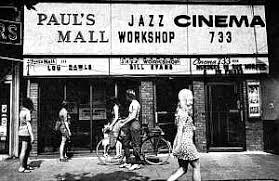Ignored Obscured Restored
In the annals of Fleetwood Mac’s storied history, stands the band’s Bob Welch period. Snuggled between the group’s formative Peter Green time and the wildly popular and enduring Buckingham/Nicks era, the middle period Welch years form a fascinating chapter of transformation and creativity. Among the gems from this period is the evocative track “Silver Heels,” a song that exemplifies Welch’s unique contributions to the band’s sound and ethos. Released on the 1974 album Heroes Are Hard to Find (Welch’s last with the band), “Silver Heels” highlights his songwriting prowess.
To understand the significance of “Silver Heels,” it’s essential to consider the broader context of Fleetwood Mac during Bob Welch’s tenure. Welch joined Fleetwood Mac in 1971, succeeding the departing Peter Green, whose departure marked the end of the band’s initial blues phase. Welch’s arrival signaled a new direction for the band, integrating more rock and pop elements into their music. This shift was not merely a change in style but a strategic pivot that aimed to revitalize Fleetwood Mac’s commercial prospects.
Welch brought with him a distinct songwriting ability and a knack for blending melodic sensibilities with rock and pop influences. This creative evolution was crucial as the band navigated its identity during this transitional phase. By the time “Silver Heels” was recorded, Fleetwood Mac had begun to see some success with their new sound, albeit still striving for the breakthrough that would eventually come with the addition of Lindsey Buckingham and Stevie Nicks.
“Silver Heels” is emblematic of Welch’s ability to craft songs that are both introspective and accessible. The song’s title, “Silver Heels,” immediately conjures images of glamour and mystique, suggesting a narrative or character-driven exploration. The lyrics, coupled with Welch’s distinctive guitar work and smooth vocal delivery, create a sense of allure and enigma.
She came in and her flags were flying
She was a sailboat of sweet perfume
And I could see that her eyes were smiling
From across the room
Well, I couldn’t think of conversation
I was busy looking at her fur
She said hey, you never ask me
So I guess I’ll say the word
Musically, “Silver Heels” showcases Welch’s deftness in merging rock and pop elements. The track features a layered arrangement that includes subtle yet effective guitar riffs and a steady rhythm section. Welch’s guitar work – including a nice solo at about 2:15 — adds a nuanced texture to the song, blending seamlessly with the melodic lines
His vocals, characterized by their smooth, almost ethereal quality, further enhance the song’s atmospheric feel, especially on the catchy chorus, with its name-checking of Paul McCartney and Etta James.
“Silver Heels” may not have achieved the iconic status of some of Fleetwood Mac’s later hits, but it remains a testament to the band’s versatility and Welch’s influence. The song captures a moment of experimentation and growth within Fleetwood Mac, underscoring the band’s willingness to explore new directions and sounds.
In retrospect, “Silver Heels” serves as a reminder of the rich tapestry of Fleetwood Mac’s musical journey. It highlights how each era, including the Bob Welch period, contributed to the band’s enduring legacy. As you revisit “Silver Heels,” you will not only experience a snapshot of Fleetwood Mac’s past but also appreciate the nuanced artistry and cultural references that helped shape one of rock’s most long-lived bands.
Enjoy… until next week.

